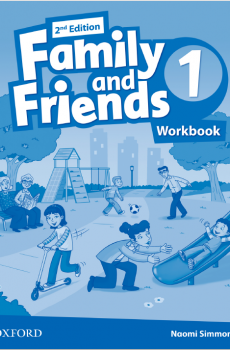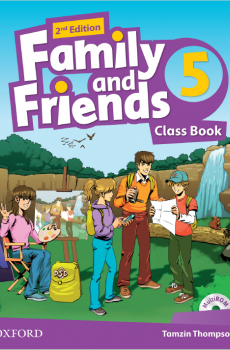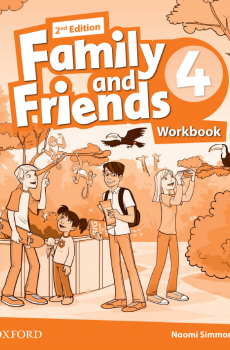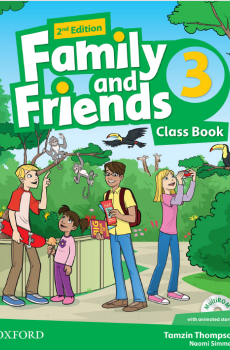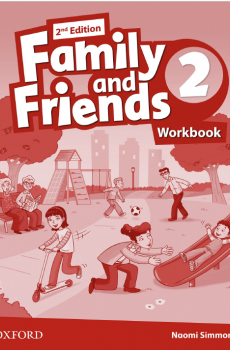Graded Lessons in English An Elementary English Grammar Consisting of One Hundred Practical Lessons, Carefully Graded and Adapted to the Class-Room
Graded Lessons in English An Elementary English Grammar Consisting of One Hundred Practical Lessons, Carefully Graded and Adapted to the Class-Room
Log in to download this book.
| Publisher | Chưa rõ |
|---|---|
| Accessible book producer | Public domain |
| Published year | 2004 |
| Coppy right | Chưa rõ |
GRADED LESSONS IN ENGLISH.
AN
ELEMENTARY
ENGLISH GRAMMAR,
CONSISTING OF
ONE HUNDRED PRACTICAL LESSONS,
CAREFULLY GRADED AND ADAPTED TO THE CLASS-ROOM,
BY
ALONZO REED, A.M.,
FORMERLY INSTRUCTOR OF ENGLISH GRAMMAR IN THE POLYTECHNIC INSTITUTE, BROOKLYN
AND
BRAINERD KELLOGG, LL.D., PROFESSOR OF THE ENGLISH LANGUAGE AND LITERATURE IN THE POLYTECHNIC INSTITUTE, BROOKLYN
REVISED EDITION, 1896.
A COMPLETE COURSE IN ENGLISH. BY ALONZO REED, A.M., AND BRAINERD KELLOGG, LL.D.
REED'S WORD LESSONS, A COMPLETE SPELLER. Designed to teach the correct spelling, pronunciation, and use of such words only as are most common in current literature, and as are most likely to be misspelled, mispronounced, or misused, and to awaken new interest in the study of synonyms and of word-analysis. 188 pages, 12mo.
REED'S INTRODUCTORY LANGUAGE WORK. A simple, varied, and pleasing, but methodical series of exercises in English to precede the study of technical grammar. 253 pages, 16mo, linen.
REED & KELLOGG'S GRADED LESSONS IN ENGLISH. An elementary English grammar, consisting of one hundred practical lessons, carefully graded and adapted, to the class-room. 215 pages, 16mo, linen.
REED & KELLOGG'S HIGHER LESSONS IN ENGLISH. A work on English grammar and composition, in which the science of the language is made tributary to the art of expression. A course of practical lessons carefully graded, and adapted to every-day use in the school-room. 386 pages, 16mo, cloth.
REED & KELLOGG'S ONE-BOOK COURSE IN ENGLISH. A carefully graded and complete series of lessons in English grammar and composition based on the natural development of the sentence. For schools that have not time to complete more than one book on grammar. 328 pages, 16mo, cloth.
KELLOGG & REED'S WORD-BUILDING. Fifty lessons, combining Latin, Greek, and Anglo-Saxon roots, prefixes, and suffixes, into about fifty-five hundred common derivative words in English; with a brief history of the English language. 122 pages, 16mo, cloth.
KELLOGG & REED'S THE ENGLISH LANGUAGE. A brief history of the grammatical changes of the language and its vocabulary, with exercises on synonyms, prefixes, suffixes, word-analysis, and word-building. A text-book for high schools and colleges. 226 pages, 16mo, cloth.
KELLOGG'S TEXT-BOOK ON RHETORIC. Revised and enlarged edition. Supplementing the development of the science with exhaustive practice in composition. A course of practical lessons adapted for use in high schools, academies, and lower classes of colleges. 345 pages, 12mo, cloth.
KELLOGG'S TEXT-BOOK ON ENGLISH LITERATURE. with copious extracts from the leading authors, English and American, and full instructions as to the method in which these books are to be studied. 485 pages, 12mo, cloth.
PREFACE.
The plan of "Graded and Higher Lessons in English" will perhaps be better understood if we first speak of two classes of text-books with which this course is brought into competition.
+Method of One Class of Text-books+.—In one class are those that aim chiefly to present a course of technical grammar in the order of Orthography, Etymology, Syntax, and Prosody. These books give large space to grammatical Etymology, and demand much memorizing of definitions, rules, declensions, and conjugations, and much formal word parsing,—work of which a considerable portion is merely the invention of grammarians, and has little value in determining the pupil's use of language or in developing his reasoning faculties. This is a revival of the long-endured, unfruitful, old-time method.
+Method of Another Class of Text-books+.—In another class are those that present a miscellaneous collection of lessons in Composition, Spelling, Pronunciation, Sentence-analysis, Technical Grammar, and General Information, without unity or continuity. The pupil who completes these books will have gained something by practice and will have picked up some scraps of knowledge; but his information will be vague and disconnected, and he will have missed that mental training which it is the aim of a good text-book to afford. A text-book is of value just so far as it presents a clear, logical development of its subject. It must present its science or its art as a natural growth, otherwise there is no apology for its being.
+The Study of the Sentence for the Proper Use of Words+.—It is the plan of this course to trace with easy steps the natural development of the sentence, to consider the leading facts first and then to descend to the details. To begin with the parts of speech is to begin with details and to disregard the higher unities, without which the details are scarcely intelligible. The part of speech to which a word belongs is determined only by its function in the sentence, and inflections simply mark the offices and relations of words. Unless the pupil has been systematically trained to discover the functions and relations of words as elements of an organic whole, his knowledge of the parts of speech is of little value. It is not because he cannot conjugate the verb or decline the pronoun that he falls into such errors as "How many sounds have each of the vowels?" "Five years' interest are due." "She is older than me." He probably would not say "each have," "interest are," "me am." One thoroughly familiar with the structure of the sentence will find little trouble in using correctly the few inflectional forms in English.
+The Study of the Sentence for the Laws of Discourse+.—Through the study of the sentence we not only arrive at an intelligent knowledge of the parts of speech and a correct use of grammatical forms, but we discover the laws of discourse in general. In the sentence the student should find the law of unity, of continuity, of proportion, of order. All good writing consists of good sentences properly joined. Since the sentence is the foundation or unit of discourse, it is all-important that the pupil should know the sentence. He should be able to put the principal and the subordinate parts in their proper relation; he should know the exact function of every element, its relation to other elements and its relation to the whole. He should know the sentence as the skillful engineer knows his engine, that, when there is a disorganization of parts, he may at once find the difficulty and the remedy for it.
+The Study of the Sentence for the Sake of Translation+.—The laws of thought being the same for all nations, the logical analysis of the sentence is the same for all languages. When a student who has acquired a knowledge of the English sentence comes to the translation of a foreign language, he finds his work greatly simplified. If in a sentence of his own language he sees only a mass of unorganized words, how much greater must be his confusion when this mass of words is in a foreign tongue! A study of the parts of speech is a far less important preparation for translation, since the declensions and conjugations in English do not conform to those of other languages. Teachers of the classics and of modern languages are beginning to appreciate these facts.
+The Study of the Sentence for Discipline+.—As a means of discipline nothing can compare with a training in the logical analysis of the sentence. To study thought through its outward form, the sentence, and to discover the fitness of the different parts of the expression to the parts of the thought, is to learn to think. It has been noticed that pupils thoroughly trained in the analysis and the construction of sentences come to their other studies with a decided advantage in mental power. These results can be obtained only by systematic and persistent work. Experienced teachers understand that a few weak lessons on the sentence at the beginning of a course and a few at the end can afford little discipline and little knowledge that will endure, nor can a knowledge of the sentence be gained by memorizing complicated rules and labored forms of analysis. To compel a pupil to wade through a page or two of such bewildering terms as "complex adverbial element of the second class" and "compound prepositional adjective phrase," in order to comprehend a few simple functions, is grossly unjust; it is a substitution of form for content, of words for ideas.
+Subdivisions and Modifications after the Sentence+.—Teachers familiar with text books that group all grammatical instruction around the eight parts of speech, making eight independent units, will not, in the following lessons, find everything in its accustomed place. But, when it is remembered that the thread of connection unifying this work is the sentence, it will be seen that the lessons fall into their natural order of sequence. When, through the development of the sentence, all the offices of the different parts of speech are mastered, the most natural thing is to continue the work of classification and subdivide the parts of speech. The inflection of words, being distinct from their classification, makes a separate division of the work. If the chief end of grammar were to enable one to parse, we should not here depart from long-established precedent.
+Sentences in Groups—Paragraphs+.—In tracing the growth of the sentence from the simplest to the most complex form, each element, as it is introduced, is illustrated by a large number of detached sentences, chosen with the utmost care as to thought and expression. These compel the pupil to confine his attention to one thing till he gets it well in hand. Paragraphs from literature are then selected to be used at intervals, with questions and suggestions to enforce principles already presented, and to prepare the way informally for the regular lessons that follow. The lessons on these selections are, however, made to take a much wider scope. They lead the pupil to discover how and why sentences are grouped into paragraphs, and how paragraphs are related to each other; they also lead him on to discover whatever is most worthy of imitation in the style of the several models presented.
+The Use of the Diagram+.—In written analysis, the simple map, or diagram, found in the following lessons, will enable the pupil to present directly and vividly to the eye the exact function of every clause in the sentence, of every phrase in the clause, and of every word in the phrase—to picture the complete analysis of the sentence, with principal and subordinate parts in their proper relations. It is only by the aid of such a map, or picture, that the pupil can, at a single view, see the sentence as an organic whole made up of many parts performing various functions and standing in various relations. Without such map he must labor under the disadvantage of seeing all these things by piecemeal or in succession.
But, if for any reason the teacher prefers not to use these diagrams, they may be omitted without causing the slightest break in the work. The plan of this book is in no way dependent on the use of the diagrams.
+The Objections to the Diagram+.—The fact that the pictorial diagram groups the parts of a sentence according to their offices and relations, and not in the order of speech, has been spoken of as a fault. It is on the contrary, a merit, for it teaches the pupil to look through the literary order and discover the logical order. He thus learns what the literary order really is, and sees that this may be varied indefinitely, so long as the logical relations are kept clear.
The assertion that correct diagrams can be made mechanically is not borne out by the facts. It is easier to avoid precision in oral analysis than in written. The diagram drives the pupil to a most searching examination of the sentence, brings him face to face with every difficulty, and compels a decision on every point.
+The Abuse of the Diagram+.—Analysis by diagram often becomes so interesting and so helpful that, like other good things, it is liable to be overdone. There is danger of requiring too much written analysis. When the ordinary constructions have been made clear, diagrams should be used only for the more difficult sentences, or, if the sentences are long, only for the more difficult parts of them. In both oral and written analysis there is danger of repeating what needs no repetition. When the diagram has served its purpose, it should be dropped.
SUGGESTIONS FOR COMPOSITION EXERCISES
The exercises in composition found in the numbered Lessons of this book are generally confined to the illustration and the practical application of the principles of the science as these principles are developed step by step. To break up the continuity of the text by thrusting unrelated composition work between lessons closely related and mutually dependent is exceedingly unwise.
The Composition Exercises suggested in this revision of "Graded Lessons" are designed to review the regular Lessons and to prepare in a broad, informal way for text work that follows. But since these Exercises go much farther, and teach the pupil how to construct paragraphs and how to observe and imitate what is good in different authors, they are placed in a supplement, and not between consecutive Lessons of the text.
To let such general composition work take the place of the regular grammar lesson, say once a week, will be profitable. We suggest that the sentence work on the selections in the Supplement be made to follow Lessons 30, 40, 50, 60, 70, 77; but each teacher must determine for himself when these and the other outlined lessons can best be used. We advise that other selections from literature be made and these exercises continued with the treatment of the parts of speech.
For composition work to precede Lesson 30 we suggest that the teacher break up a short story of one or two paragraphs into simple sentences, making some of these transposed, some interrogative, and some exclamatory. The pupils may be required to copy these, to underline the subject and the predicate, and to tell, in answer to suggestive questions, what some of the other words and groups of words do (the questions on the selections in the Supplement may aid the teacher). The pupils may then write out the story in full form. To vary the exercise, the teacher might read the story and let the pupils write out the short sentences.
A TALK ON LANGUAGE.
The teacher is recommended, before assigning any lesson, to occupy the time of at least two or three recitations, in talking with his pupils about language, always remembering that, in order to secure the interest of his class, he must allow his pupils to take an active part in the exercise. The teacher should guide the thought of his class; but, if he attempt to do all the talking, he will find, when he concludes, that he has been left to do all the thinking.
We give below a few hints in conducting this talk on language, but the teacher is not expected to confine himself to them. He will, of course, be compelled, in some instances, to resort to various devices in order to obtain from the pupils answers equivalent to those here suggested.



